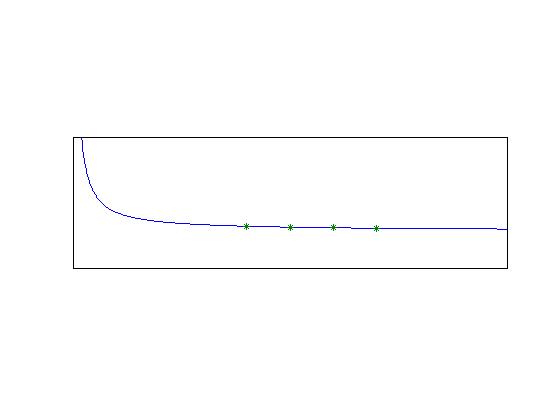 |
||||||||
 |
 |
 |
 |
|||||
 |
||||||||
 |
||||||||
 |
 |
|||||||
 |
||||||||
 |
||||||||
 |
||||||||
 |
||||||||
 |
||||||||
ROOT FINDING
Convergence and Other Issues
In the example provided, one can use tables of the Prandtl-Mayer expansion formula to check that the code has reached the correct location. What happens when that is not possible; how can one tell that the code has reached convergence without a known solution? The relative error concept from the the discussion of errors can be used to examine the solution behavior:
Errorrel = ||(Mnew + Mold)/(Mnew)||*100
This tracks the change in the estimate of the root. This is the concept of convergence, as illustrated in Fig. 4↓.. How fast these methods reach their solutions- want to maximize accuracy while minimizing time to get their solution. (operation count and iterations). To understand this, the concept of approximations is introduced.
Consider the derivative:
(dx)/(dt) ≈ (Δx)/(Δt) = (x(ti + 1 − x(ti))/(ti + 1 − ti)
If the function x is not linear with respect to time, then this is an approximation that can be estimated by a series:
f(xi + 1)
≡
f(xi) + f’(xi)(xi + 1 − xi) + ... + (fn(xi))/(n!)(xi + 1 − xi)2 + Rn
≡
f(xi) [0th-order approximation]
≡
f(xi) + (∂f)/(∂x)Δx = f(xi) + f’(xi)(xi + 1 − xi) [2ndorder approximation]
Rn
=
(fn + 1)/((n + 1)!)Δxn + 1 [Remainder]
Using a Taylor Series to approximate the derivatives results for the first derivative and a first-order remainder will result in:
f(xi + 1)
=
f(xi) + f’(xi)Δx = + Rn
f’(xi)
=
(f(xi + 1) − f(xi))/(Δx) + (Rn)/(Δx)
Rn
=
(f)/(2)Δx2
(Rn)/(Δx)
=
(f")/(2)Δx
Next Page →
Next Page →
← Previous Page
← Previous Page
